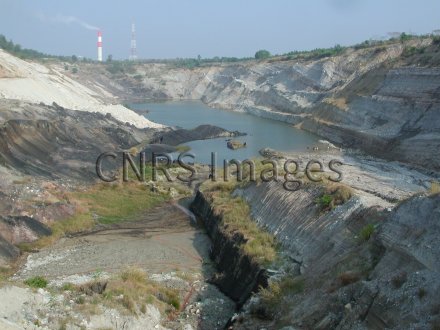Production year
2004

© Yaowalak CHAIMANEE/CNRS Images
20130001_1854
Mine de Krabi, en Thaïlande péninsulaire, montrant le niveau de la lignite où a été découvert "Krabia minuta", un fragment maxillaire fossile provenant d'un primate anthropoïde. L'analyse de la morphologie dentaire indiquerait vraisemblablement un régime alimentaire frugivore ou gommivore. Le site de Krabi est daté de la fin de l'Eocène, il y a 35 à 34 millions d'années. Ce primate témoigne d'une biodiversité importante et d'une grande diversité d'adaptations au sein des anthropoïdes (humains, grands singes et singes) asiatiques de cette époque. Ce fossile, combiné à d'autres découvertes paléontologiques, suggère une origine asiatique et non africaine des primates anthropoïdes.
The use of media visible on the CNRS Images Platform can be granted on request. Any reproduction or representation is forbidden without prior authorization from CNRS Images (except for resources under Creative Commons license).
No modification of an image may be made without the prior consent of CNRS Images.
No use of an image for advertising purposes or distribution to a third party may be made without the prior agreement of CNRS Images.
For more information, please consult our general conditions
2004
Our work is guided by the way scientists question the world around them and we translate their research into images to help people to understand the world better and to awaken their curiosity and wonderment.